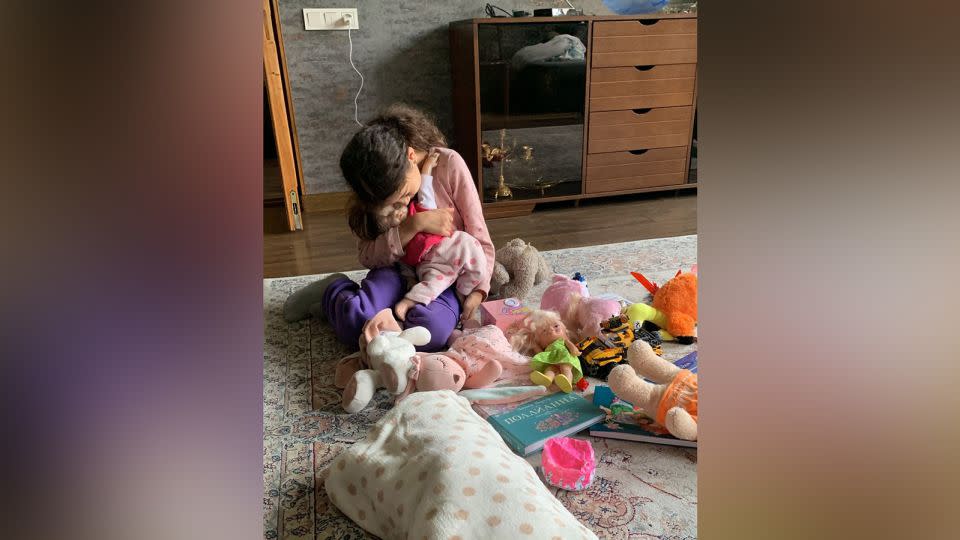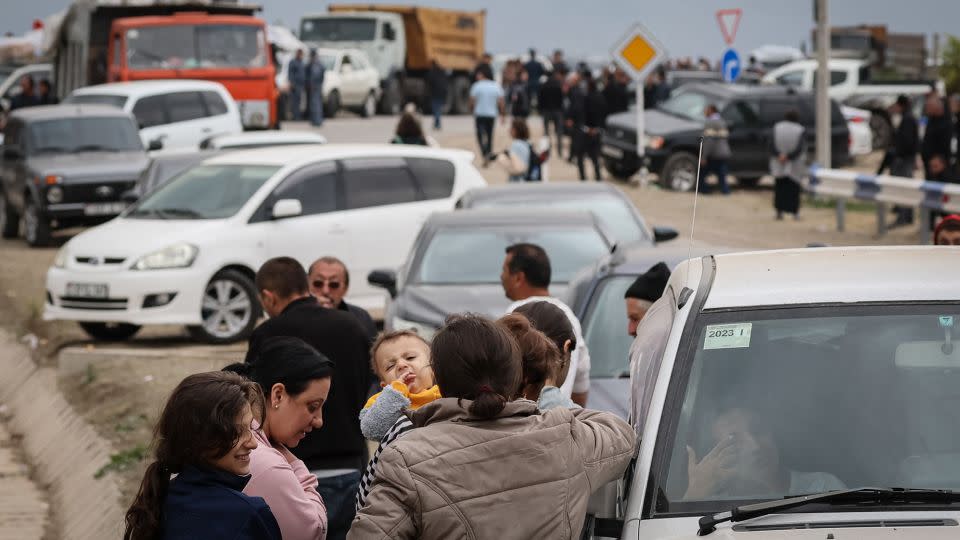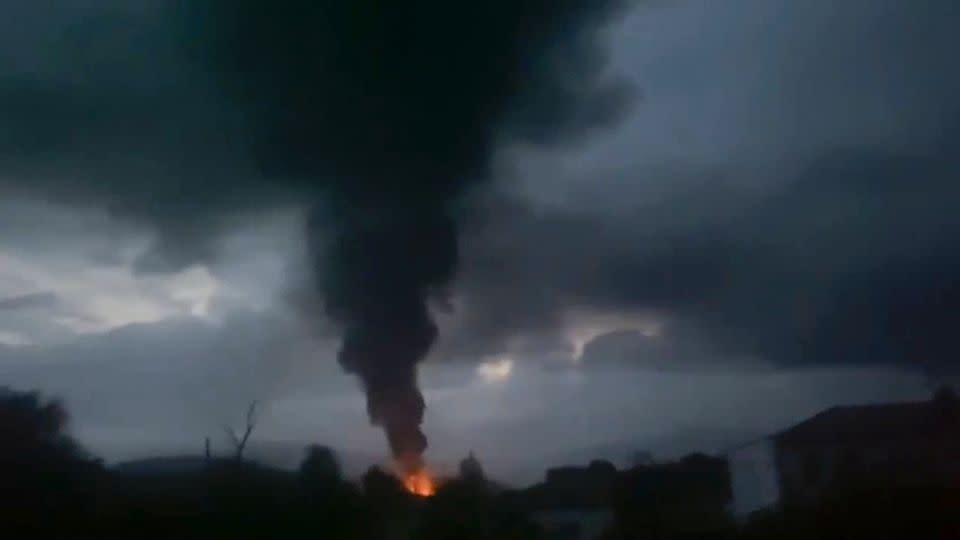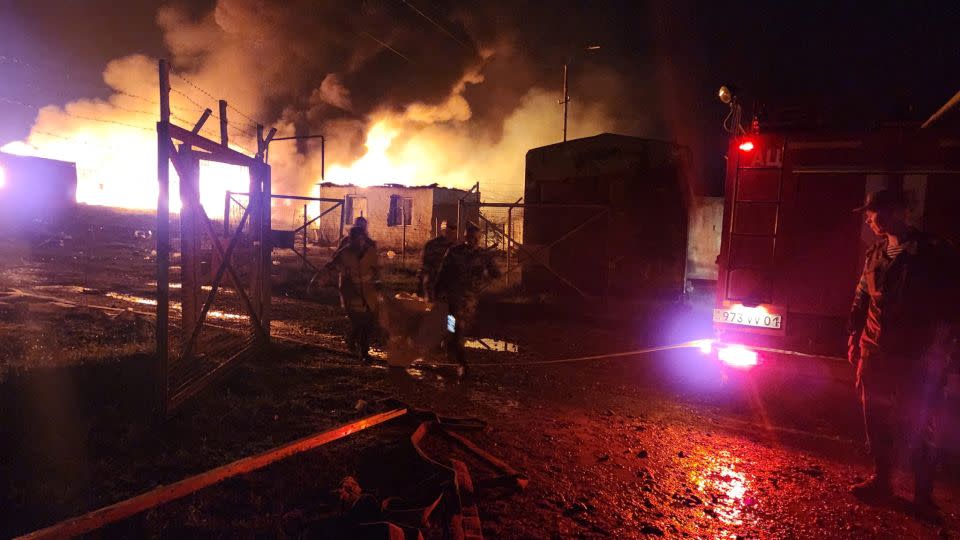Thousands of ethnic Armenians flee Nagorno-Karabakh after breakaway region’s defeat
Nonna Poghosyan spent Monday morning walking around her family home in Nagorno-Karabakh “trying to understand what to take, what is the most important stuff I can fit into my suitcase.”
Her nine-year-old twin children had been upstairs, deciding which of their belongings they would have to leave behind. “They cry for every toy,” Poghosyan, the American University of Armenia’s program coordinator in the region’s capital Stepanakert, told CNN.
Poghosyan and her family are about to join the thousands of people fleeing Nagorno-Karabakh for Armenia, days after Azerbaijan launched a lightning offensive and said it had taken back full control of the breakaway region, sparking a mass exodus of the region’s 120,000 ethnic Armenians.
More than 13,500 people had arrived in Armenia from Nagorno-Karabakh by Tuesday, the Armenian foreign ministry told CNN.
As many more were attempting to flee the enclave on Monday evening, a powerful explosion ripped through a gas station near Stepanakert, where people had been attempting to get fuel before driving to Armenia.
The explosion left at least 68 people dead and 290 injured, according to the Nagorno-Karabakh Human Rights Ombudsman Gegham Stepanyan. Over 100 people remain missing, Stepanyan also said.

Azerbaijan’s brief but bloody offensive last week killed more than 200 people and injured many more, before Karabakh officials agreed to a Russia-brokered ceasefire in which they agreed to dissolve their armed forces. Azerbaijani President Ilham Aliyev said Baku had restored its sovereignty over the enclave “with an iron fist.”
The Karabakh presidency told Reuters that the majority of Karabakh Armenians did not want to live in Azerbaijan and that they would leave for Armenia. Azerbaijan has said it will guarantee the rights of those living in the region, but Armenian Prime Minister Nikol Pashinyan and international experts have repeatedly warned of the risk of ethnic cleansing of Armenians in the enclave.
“Our people do not want to live as part of Azerbaijan. Ninety-nine point nine percent prefer to leave our historic lands,” David Babayan, an adviser to Samvel Shahramanyan, the president of the self-styled Republic of Artsakh, told Reuters.
Poghosyan told CNN she did not know of a single family who was planning to remain in Nagorno-Karabakh. “If they say 99.9, it’s false. It’s 100%,” she said.
“Aliyev can tell you a lot of tales saying ‘Look, look, a lot of Armenian families are staying.’ But I know that no one – even the poorest family – is staying.”
Azerbaijan has long been explicit about the choice that confronts Karabakh Armenians. Those who choose to remain must accept Azerbaijani citizenship. Those who do not must leave.
Anna Ohanyan, a senior scholar in the Russia and Eurasia program at the Carnegie Endowment for International Peace, told CNN that there is “no question” that Azerbaijan would use force against those who attempted to stay and reject rule from Baku.
“If the Armenian community will not leave, but also will not take up Azerbaijani passports, I think that basically would be suicidal,” Ohanyan said.
More than 100 bodies have been recovered in the latest search and rescue operations following Azerbaijan’s military operations, Karabakh emergency services told Armenpress.
Among the bodies were two children and an elderly couple, officials said. CNN could not independently verify the claims.
Images shared on social media showed residents of Stepanakert, the region’s capital, packing their belongings into cars and vans, and searching for gas. The region had been blockaded by Azerbaijan-backed activists for nine months, causing chronic shortages of food, medicine and fuel.
Most of those fleeing Karabakh were women, children and the elderly, the deputy mayor of the Armenian town of Goris, Irina Yolyan, told Armenpress Monday. Goris lies close to the border between Armenia and Azerbaijan, near the Lachin corridor – the only road connecting the enclave to Armenia.
The road has been partially opened, to allow people to flee to Armenia, according to Poghosyan.

Poghosyan told CNN she is planning to leave on Tuesday, along with her husband, nine-year-old twin children, parents and grandmother. The seven of them would have left sooner, but were warned that traffic on the road means many have been stuck for hours, with thousands trying to flee already.
While she and her children began sorting through their belongings, her father had joined the long line for fuel. “The government told us we can get five liters for free,” said Poghosyan. “But they say the line is so huge, the traffic, that maybe we will need more and this will not be enough.”
She said her children had been “horrified” by the shelling of Stepanakert, which began as they were walking home from school. Her husband had managed to find them on the street and take them to a bomb shelter, where her family hid overnight Tuesday.
After the initial shock, the weekend had brought clarity, she said, as her children began to understand they would have to say goodbye to their home. “I was surprised how they could… understand everything,” said Poghosyan.
“Today, they took their markers, and they went to their rooms, and they painted on their walls. They drew churches, crosses, some words, like ‘Artsakh, we love you. We will never forget you. We don’t want to lose you, our motherland.’”

The Armenian government said it was providing accommodation to all those who did not have a place to stay, according to Armenpress.
“I knew Artsakh was a conflict territory. I knew, because I’ve passed through four wars already. But who knew that the end would be so tragic? Like, this is the end, you know,” said Poghosyan.
“They changed our flag, our government surrendered. That’s all. No Armenian will be left here within maybe two weeks maximum, I think.”
Gas station explosion
As residents of Stepanakert were still attempting to claim their fuel rations before making the drive, an explosion tore through a gas station just outside of the city on Monday evening, killing at least 20 people and injuring nearly 300, according to Armenpress.
Videos on social media showed a crowded hospital in the city as medical staff attempted to treat burn patients. The blockade of the Lachin corridor meant that medical supplies to Nagorno-Karabakh have been cut off for months, along with food and fuel.

“At this moment, we do not have any medical resources left that can help us. In terms of medication, we do not have [anti-burn] antibiotics. We have a very high number of burn patients,” said a member of the medical staff at a hospital in Stepanakert, in a video shared Monday by local journalist Siranush Sargsyan.
“We urgently need to evacuate our patients to specialized burn units in Yerevan,” Armenia’s capital, she said.
Gegham Stepanyan, the Ombudsman in the region, said on X that “the medical capacities of Nagorno-Karabakh are not enough.”
David Babayan, an adviser to the president of the self-styled Republic of Artsakh, said he did not believe the blast was the result of a “terrorist act.”
“Based on the available data, the probability of a #terrorist act is practically zero,” Babayan wrote on Telegram Tuesday. He said an investigation was necessary, but this was “practically impossible” under current circumstances.
Speaking to CNN Tuesday, Poghosyan said her friend’s brother was among those killed. “Just now they messaged me that they identified him as dead, as one of the victims. They say victims are more than 200 but not identified yet. It’s really… I don’t know. As if it was not enough.”
Poghosyan said her Facebook feed had been filled with “hundreds” of posts about “missing people, families are looking for their relatives.”

Poghosyan spoke to CNN from her car in Stepanakert at around 1 p.m. local time. Her family had begun the drive to Armenia Tuesday morning, but she said “it seems impossible to leave.”
“We went out at 7am and haven’t moved 50 meters. We are in the center of Stepanakert, stuck. It’s not just a traffic jam. It seems that the movement is closed. There is no movement at all, no movement for six hours already. Just six hours already. There’s no water at home. I don’t know.”
CNN’s Caitlin Danaher, Sahar Akbarzai and Darya Tarasova contributed reporting.
For more CNN news and newsletters create an account at CNN.com

